A chance lunch sparked Chandauli’s black rice revolution, transforming a struggling agricultural community into a thriving powerhouse. Discover how innovation turned grains into “black gold.”
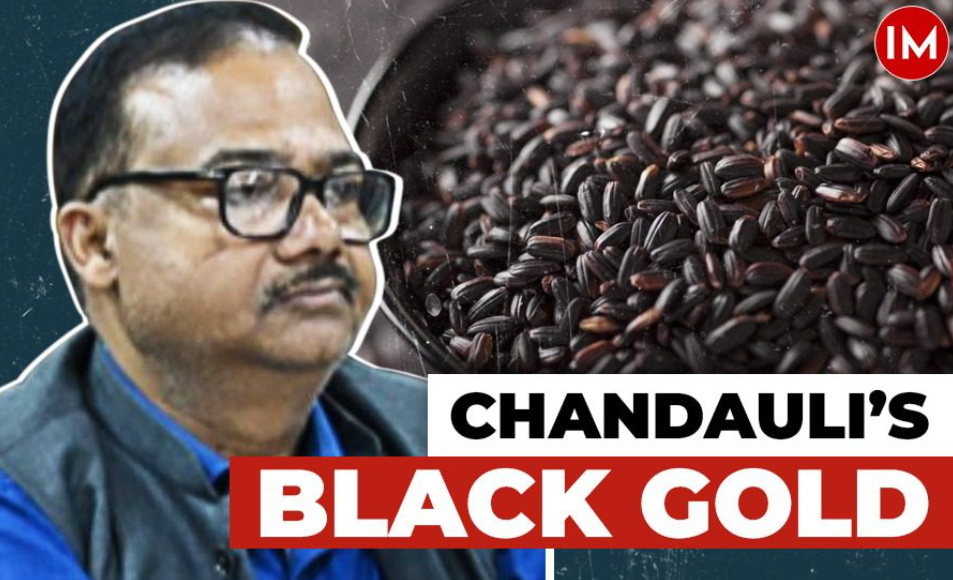
Chandauli, Uttar Pradesh – often nicknamed the “rice bowl” of the state – thrives on agriculture. Here, where two-thirds of the population depends on agriculture, golden grains have long-sustained lives and livelihoods. Yet, in 2018, a shadow of low income and reduced soil fertility loomed over its farmers.
However, senior IAS officer, Rajendra Kumar Singh, posted as the Deputy Director of Agriculture in Chandauli, during the time, dreamt of a different kind of gold – black gold, to be precise. This is the story of how a chance encounter, a sprinkle of innovation, and a whole lot of black rice transformed Chandauli’s agricultural landscape.
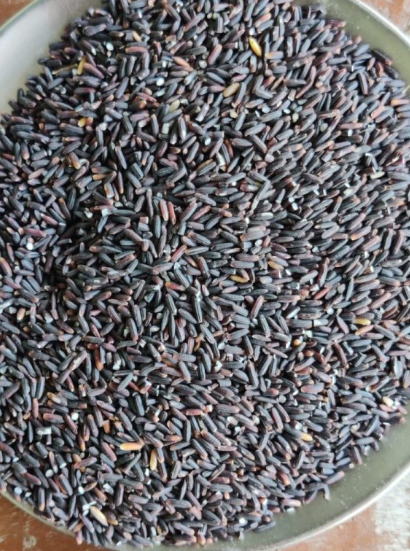
A SEED OF INSPIRATION IS SOWN
It all began with a fortuitous lunch. The officer, along with the District Magistrate, found themselves sharing a meal with Maneka Gandhi, the then Union Minister for Women and Child Development.
As the conversation flowed towards agriculture, the minister posed a question that sparked a revolution: “What’s the best crop Chandauli can produce?” Mr. Singh readily replied, “Rice, hands down. We have the highest productivity in all of UP!”
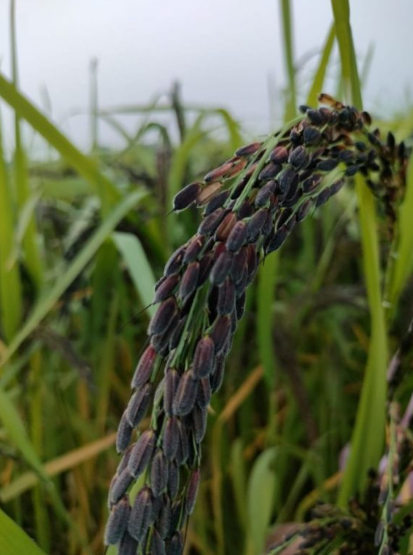
“I told her that the yield of rice is so great here that if someone was to throw a plate from the skies to the ground below, it would land up in the thick rice field and won’t even touch the ground,” he told Indian Masterminds.
It was then that Maneka Gandhi suggested a revolutionary idea – black rice cultivation. The idea resonated deeply. Black rice, a nutrient-rich grain with a unique black husk, was not only a novelty but also a potential goldmine for Chandauli’s farmers. Here was a chance to not just diversify crops but potentially rewrite Chandauli’s agricultural story.
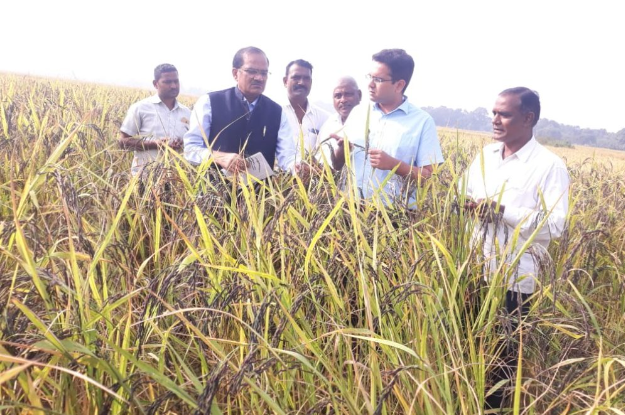
FROM PRESS CONFERENCE TO PADDY POWERHOUSE
Mr. Singh, a man of action, wasted no time. He procured 100 kgs of black rice paddy at Rs. 1200 per kg, from Manipur, a state known for its black rice cultivation. But this wasn’t just about acquiring seeds. It was about igniting a spark in the farming community.
“We meticulously packaged and treated the precious paddy before hosting a grand press conference. Over 40 journalists and news agencies, were invited and our eager audience, received packets containing 200 grams of black rice seeds,” he shared.
The officer transformed into a patient teacher, not just distributing seeds but educating the media on planting, nurturing, and harvesting exotic grain. This unique partnership – the government and the media – became the seedbed for a revolution. Both the department and the media personnel diligently cultivated the black rice, and the results were phenomenal. The yield – a staggering 60 quintals per hectare – surpassed all expectations.
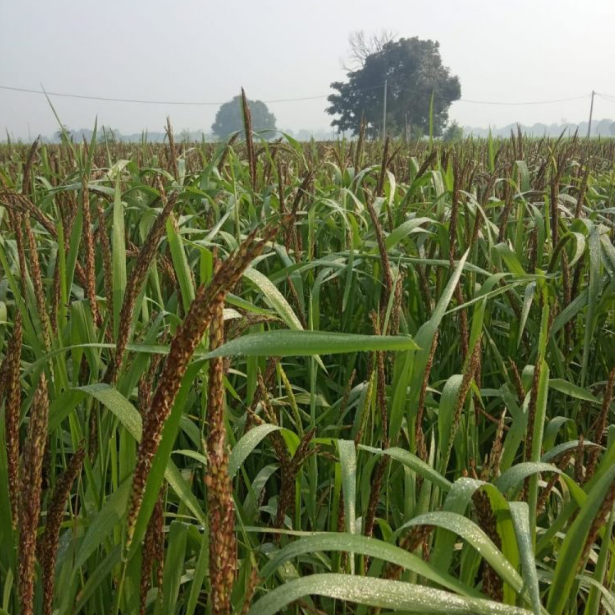
EMPOWERING FARMERS, BUILDING A FUTURE
The success story didn’t end there. Mr. Singh, recognizing the need for long-term sustainability, established Farmer Producer Organizations (FPOs). These collectives empowered farmers to manage the entire process – from cultivation to marketing – independently. Today, Chandauli’s farmers are not just cultivating black rice; they’re running a thriving black rice business.
The ripple effect was undeniable. Neighbouring districts, including Mirzapur, took notice and began replicating the model. But Chandauli, under the officer’s leadership, remained the pioneer.
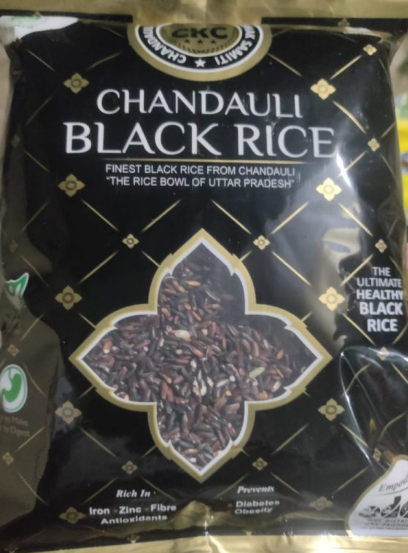
Even after his transfer to Lucknow, where he is currently posted as the Additional Director of Agriculture (Extension) at the Department of Agriculture, Govt of Uttar Pradesh, Mr. Singh’s dedication to Chandauli’s black rice revolution remained steadfast. He continued to visit the district, meeting with farmers and ensuring a smooth transition.
In fact, his commitment went a step further. When the government’s supply chain didn’t include black rice, he dug into his own pocket to purchase paddy, ensuring the continuation of this golden venture. This dedication earned him the prestigious Chief Minister’s Excellence Award, a testament to his vision and initiative.
BLACK RICE: A NUTRITIONAL POWERHOUSE
Black rice isn’t just visually distinct; it’s a nutritional powerhouse. Packed with antioxidants, vitamins, and fiber, it boasts anti-inflammatory properties and high zinc and iron content.
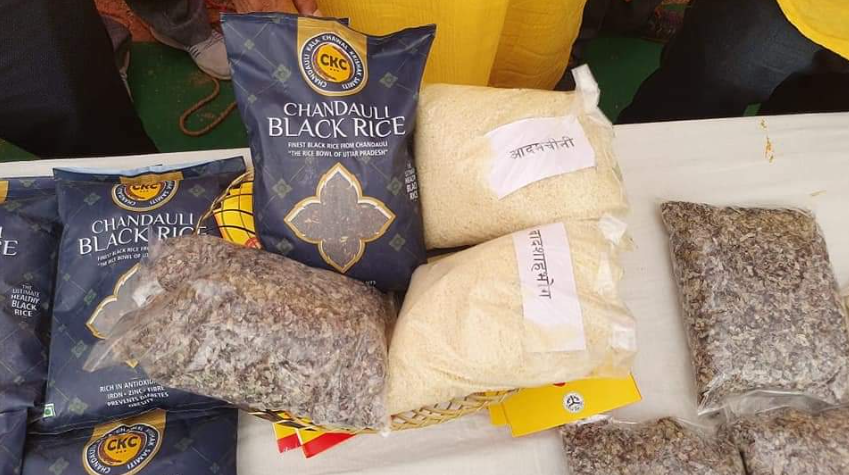
A GOLDEN FUTURE, SPROUTED FROM BLACK SEEDS
Chandauli’s black rice story is far from over. The “Chandauli Kala Chawal Samiti” ensures fair market access for farmers. The area under black rice cultivation has increased exponentially, from a mere 10 hectares in 2018 to a staggering 400 hectares today. The production, once a modest 30 quintals, has ballooned to a revenue-generating 8000 quintals.
As Chandauli’s black rice continues to find its way onto plates across the country and beyond, it serves as an inspiration, a reminder that even the most familiar landscapes can yield extraordinary harvests.
Article Credit: indianmasterminds